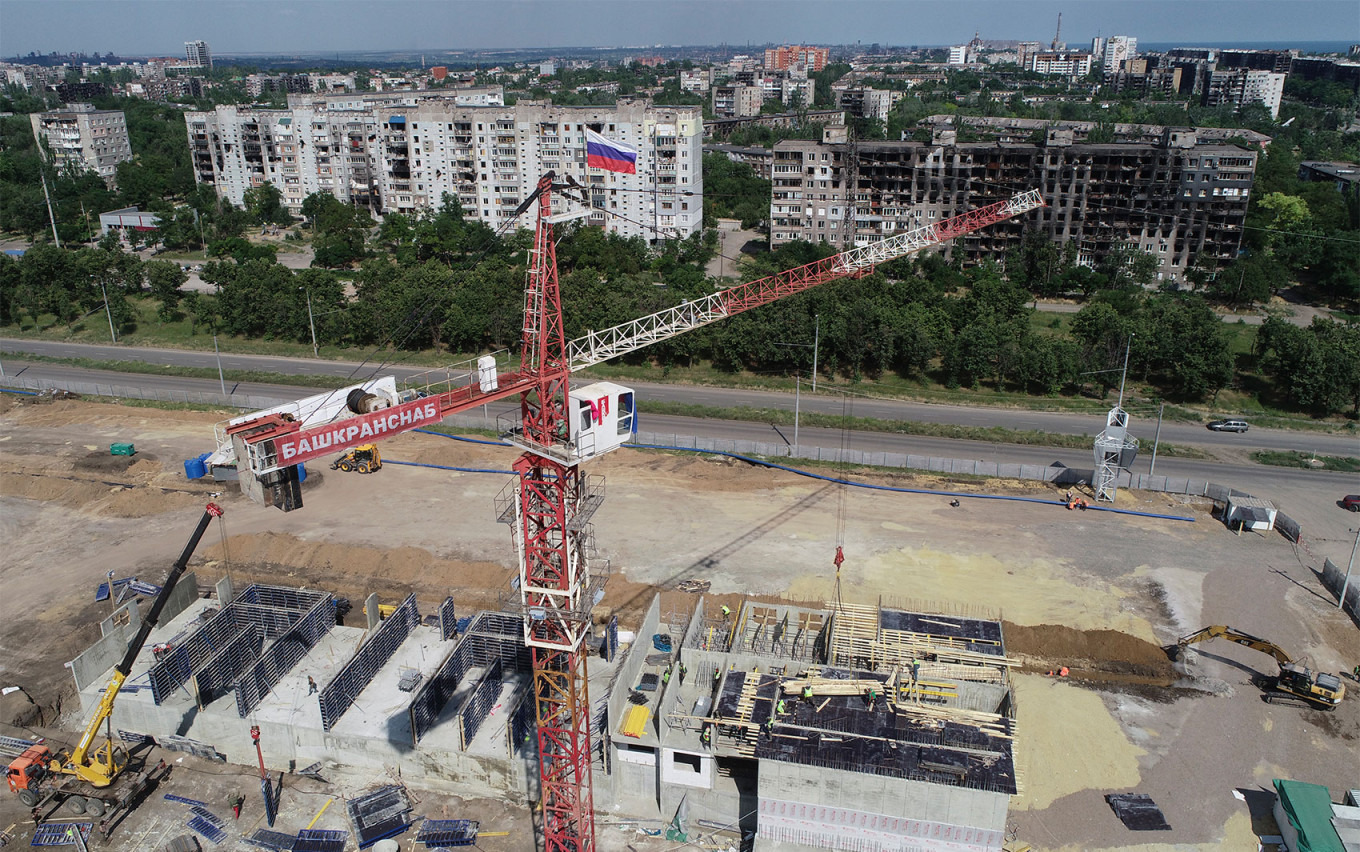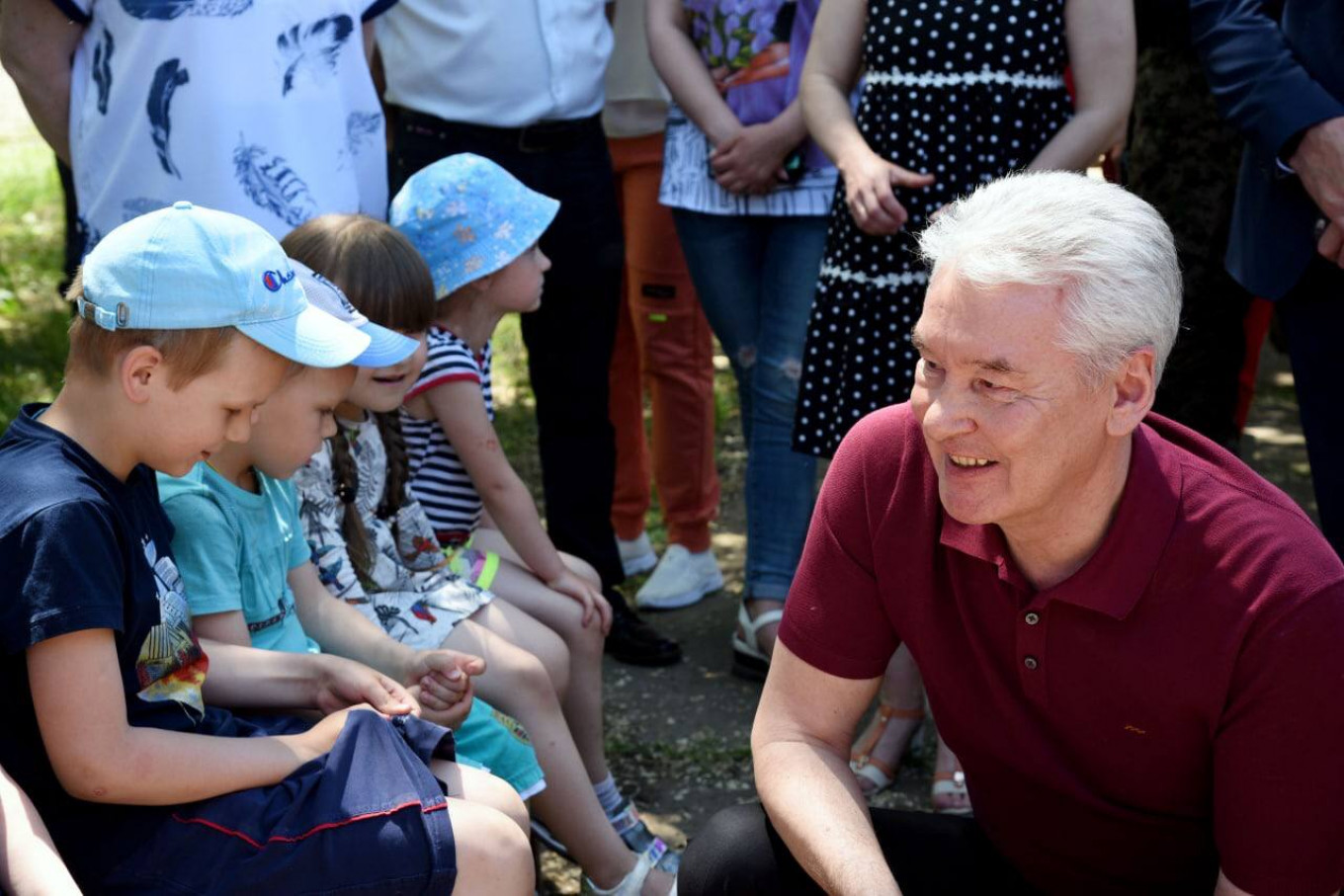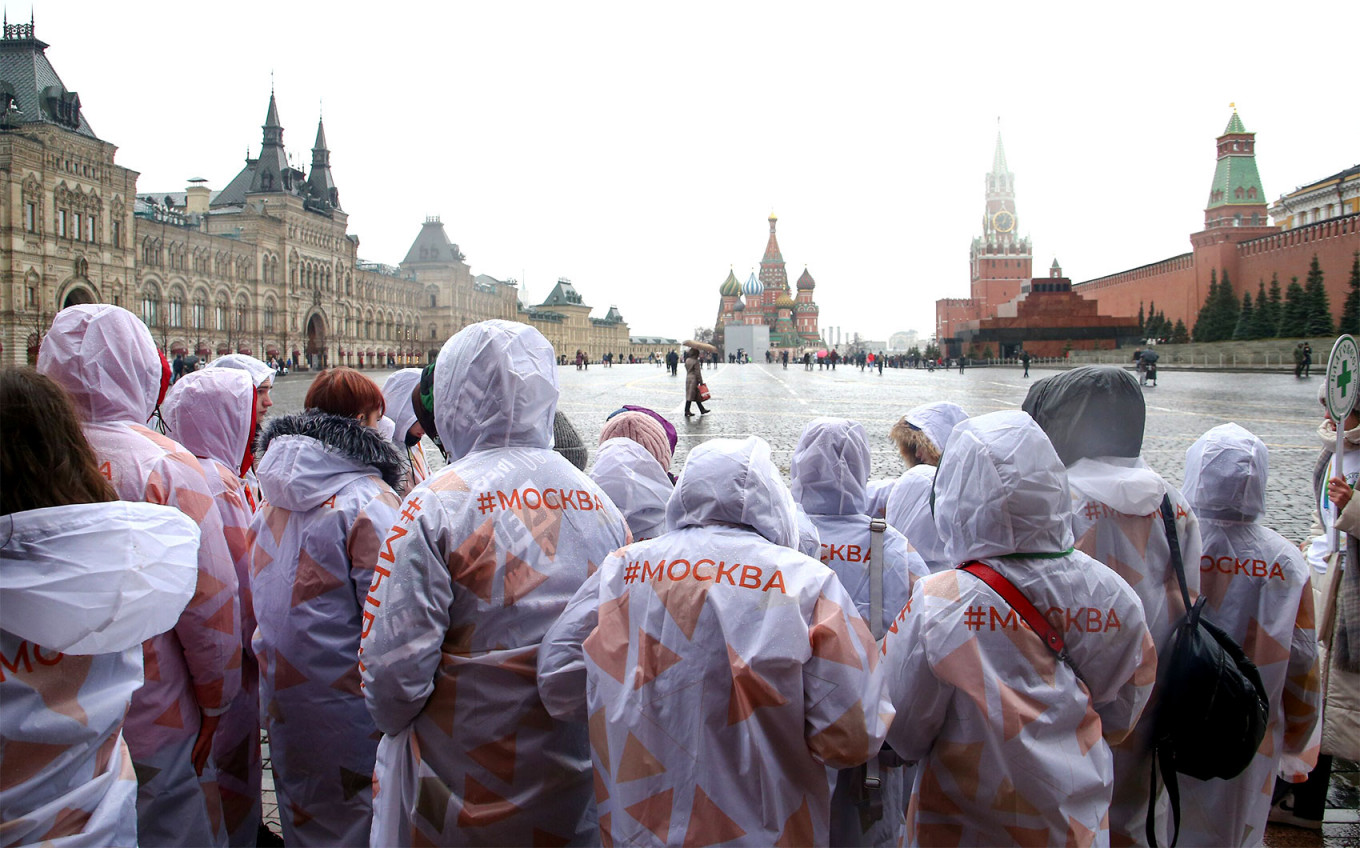A few days after the announcement that St. Petersburg would officially be twinned with occupied Mariupol, St. Petersburg governor Alexander Beglov visited the devastated Ukrainian port city seized by Russia after three months of bloody fighting.
Beglov went to see a school, where he handed out tablet computers to children, and dropped in to see the ruined Mariupol theater where hundreds of civilians were reported to have been killed in a bombing by Russian forces in March.
“Every Mariupol school will be helped by a St. Petersburg one,” Beglov said, according to media reports. A few days later, he elaborated on the plans for the twin-city status, announcing that St. Petersburg would finance the rebuilding of houses, schools and kindergartens in Mariupol, and send teams of construction workers.
The new link between St. Petersburg and Mariupol is the most high-profile example of a Kremlin program to assist the war-torn, occupied territories of Ukraine by twinning Russian and Ukrainian cities — and devolving responsibility for reconstruction to local Russian authorities.
“It’s both an attempt to shift responsibility for additional costs from the Kremlin to regional governors and a PR campaign,” said political analyst Ivan Preobrazhensky.
“It’s obvious the Kremlin stole the idea from Western countries that also announced they would rebuild Ukrainian cities.”

In total, more than 40 Russian regions have announced they are assuming patronage over areas of Ukraine seized by Russia since the program was unveiled in May.
Moscow Mayor Sergei Sobyanin last month pledged to rebuild the cities of Donetsk and Luhansk in order to restore “normal and peaceful life” there, while Chelyabinsk sent 10 ambulances to eastern Ukraine’s Yasynuvata district as part of a formal twinning and Magadan region — over 10,000 kilometers east of Ukraine — has been linked with the town of Zhdanivka.
A former Moscow city official close to the Kremlin told The Moscow Times that the idea of the program was to use the current “emotional boost” of Russians wanting to help Ukrainians in what Russian officials refer to as “liberated territories.”
“It is a good decision, it is not efficient to focus everything in the federal center, different cities [of occupied Ukraine] require different approaches and it’s easier to work directly with [Russian] regions. It means the heads of the regions travel, inspect everything themselves and discuss the situation with the local authorities,” said the former official, who spoke on condition of anonymity.
The idea of twinning Russian and Ukrainian cities is believed to be the brainchild of President Vladimir Putin himself. But Putin entrusted the realization of the project to his deputy chief of staff, Sergei Kiriyenko, who oversees occupied Ukrainian territory for the Kremlin.

Kiriyenko, who announced the program, was one of the first top Kremlin officials to visit occupied Ukraine when he unveiled a statue in Mariupol in early May.
In addition to economic ties, the twinning program will apparently also involve the dispatch of construction workers, teachers and officials with administrative experience – and the development of some cultural ties.
St. Petersburg’s annual Alye Parusa (“Scarlet Sails”) festival for high school graduates was last month held simultaneously in St. Petersburg and Mariupol.
Dozens of schoolchildren from Mariupol were taken to St. Petersburg’s extravagant sound and light show for the occasion, with some wearing T-shirts emblazoned with “Petersburg-Mariupol.” Russian state-run media later reported that the Mariupol children were “impressed” by the warm welcome and the spectacle.
Similar festivities, albeit on a smaller scale, were organized in the port city of Mariupol, where the United Nations estimated last month that the fighting had damaged 90% of the city’s buildings.

“Our guys from Donbas, from our sister city Mariupol are with us. They are with us forever,” Governor Beglov said in a speech to crowds in downtown St. Petersburg for the occasion.
The program is restricted to territory seized in Ukraine’s Luhansk and Donetsk regions, collectively known as the Donbas. While Russia announced Sunday that it had taken control of the entirety of Luhansk region, much of Donetsk region remains in Ukrainian hands.
Russian-occupied areas of Ukraine’s Kharkiv, Kherson and Zaporizhzhia regions are not covered by the twinning program.
Despite the long list of Russian towns and regions to announce new affiliations, little is known about exactly how much money will be committed, or where exactly it will come from. Some Russian media reports suggested the money will directly come from regional budgets, others that Moscow will provide compensation.
The “two-year plan is [for the Russian regions to invest] more than 2 trillion rubles ($34 billion),” the prime minister of the self-proclaimed Donetsk People’s Republic Vitaliy Khotsenko — a former top Russian official — said last month.

Officials in the neighboring Luhansk People’s Republic estimated that rebuilding will cost 1.5 trillion rubles ($26 billion).
Decentralizing the disbursement of funding for Ukraine is a way of hiding expenditures and deflecting attention away from the Kremlin in a similar way to which the Kremlin shifted unpopular decision-making on pandemic restrictions to Russia’s regional governors, according to analyst Preobrazhensky.
“Without this regional patronage, it would be easy to calculate the exact amount of money spent on the occupied Ukrainian areas and even jump to assumptions about how much money was stolen,” said Preobrazhensky.
However, the twinning program looks set to lead to unhappiness in Russian regions and could “increase negative attitudes toward the regime,” according to Abbas Gallyamov, a political analyst and former speechwriter for Putin.
“Most Russian regions say their expenses are greater than their income, and this is just another headache for them,” he said.